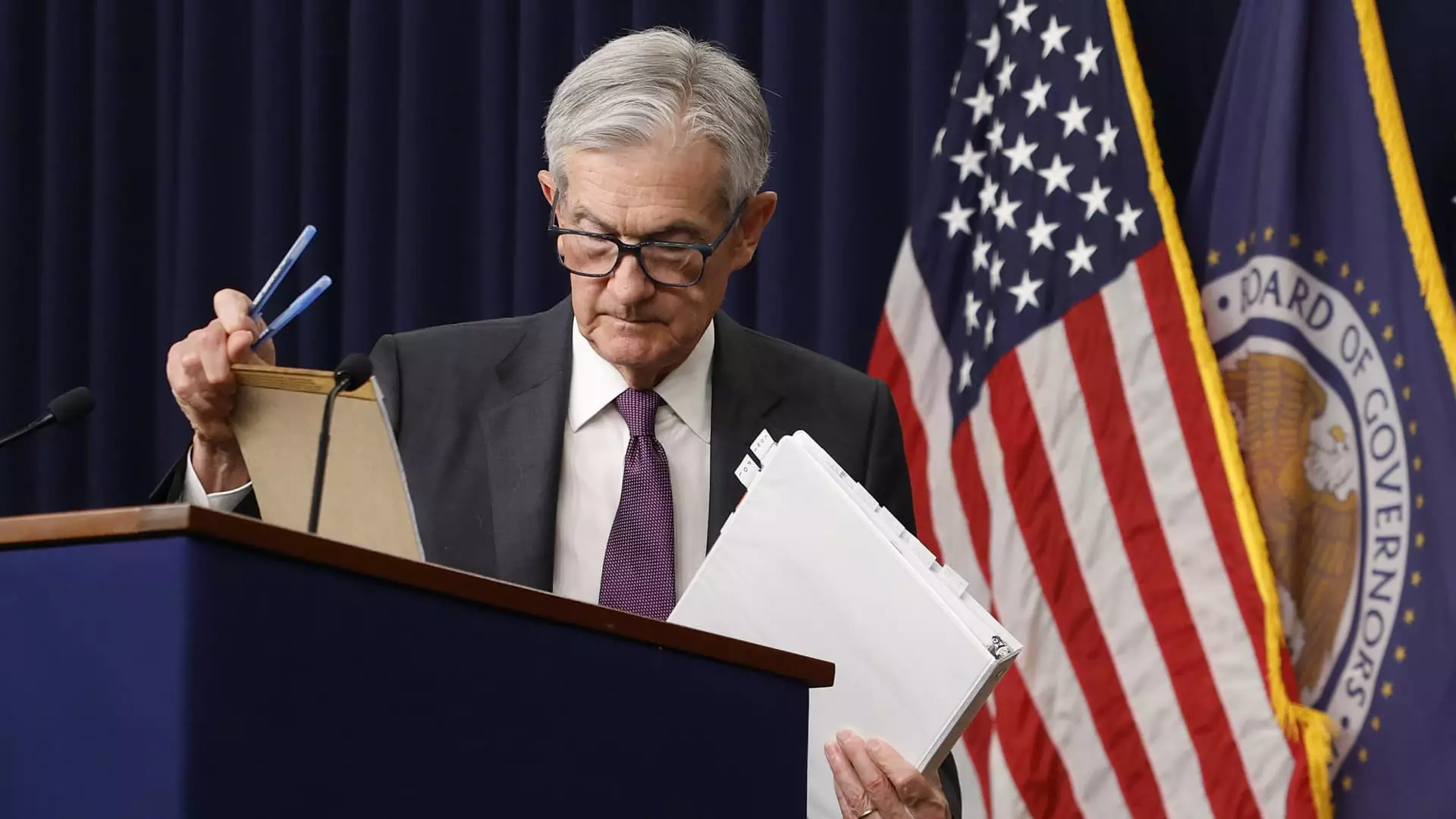The U.S. economy stands at a precarious juncture, as articulated by Federal Reserve Chair Jerome Powell in his recent address. He highlighted an increasingly complex relationship between the central bank’s dual mandate: achieving stable prices and fostering full employment. This nuance is essential, especially amid deteriorating economic conditions exacerbated by external factors such as the tariffs initiated by the Trump administration. Powell’s admission of the tension between controlling inflation and supporting growth raises critical questions about the Fed’s path forward during these tumultuous times.
Tariffs are essentially economic booby traps designed to protect domestic industries, yet they have an insidious capacity to escalate prices for American consumers. By branding foreign imports with a hefty price tag, tariffs distort market dynamics, ultimately pushing some lower-income households closer to the fiscal cliff. Powell’s acknowledgment of the challenges posed by tariffs lays bare the stark reality that we may be positioning ourselves on a tightrope where any misstep could lead directly to economic fallout.
Inflationary Pressures: A Double-Edged Sword
Powell portrayed an inescapable reality: tariffs could propel inflation rates up, even threatening the Fed’s long-term inflation target of 2%. He noted, “Tariffs are highly likely to generate at least a temporary rise in inflation.” This statement is not merely alarming; it is a bellwether for potential erratic shifts in consumer prices. The immediate consequence could lead to a strain on household budgets—a likely scenario that is almost foregone. However, the more unsettling implication lies in the persistent inflation that could take hold, drawing the Fed into a corner where it is compelled to react aggressively with monetary tightening.
Today’s consumers are already grappling with price hikes on everyday essentials. Under a regime of higher tariffs, their ability to absorb these costs diminishes. Consider the repercussions should inflation remain unchecked; not only would the cost of living skyrocket, but essential goods could begin to feel like luxury items for the middle class. Powell’s cautionary approach certainly hints at the Fed’s serious consideration of these wage-and-price pressures.
Growth Forecasts: Entering a Stagnation Era?
While inflation worries dominate the headlines, Powell also stressed the creeping shadows of slow growth. With GDP projections indicating a decrease, economic confidence seems to be wavering. Consumer spending is reportedly timid, with Powell himself remarking on “modest” growth despite strong vehicle sales. If the economy contracted or slowed as the quarter concluded, it could severely complicate the Federal Reserve’s task of maintaining stability.
Palpably, there is a creeping sense that we may be entering an era of stagnation reminiscent of previous economic downturns. Such conditions necessitate careful introspection and deliberation on the part of the Fed, particularly regarding interest rates. The duality of needing to attract spending while controlling inflation sets the stage for a tricky balancing act. The specter of stagnant wages colliding with rising prices creates an environment it will be increasingly difficult for Powell and his colleagues to navigate.
The Financial Market’s Jitters: A Reflection of Broader Anxiety
Financial markets responded vehemently to Powell’s remarks, with stocks declining and Treasury yields shifting as traders parsed through the implications of his comments. An instinctive market distrust often takes root in uncertain conditions, and currently, the Fed’s approach (or lack thereof) to those conditions could wield significant influence over the stock market’s performance. Should investors feel that Powell’s hesitance leads to a miss on the inflationary front, it may trigger broader financial instability.
The entire reliance on projected interest rate cuts introduces an acute risk. It is uncertain whether anticipated cuts will materialize in a traditional manner or if the economic landscape will dictate alternatives. An air of skepticism surrounds market players—who would be taking bets on whether or not the Fed’s next moves will ensure stability or provoke backlash.
Expectations vs. Reality: The Long Game
In the relentless maze of economic policymaking, maintaining public confidence remains paramount. Powell’s speeches must effectively communicate the Fed’s aims without instilling fear among consumers and investors alike. It’s clear that he is still attempting to balance optimism with realism in his portrayal of the economy’s trajectory. As we approach critical economic indicators and decisions, one must remain cognizant of the divergence between expectations and the unfolding reality.
The socio-economic fabric of the United States hangs in the balance, challenged by both external trade policies and internal fiscal responses. Powell’s navigation through these dilemmas will inevitably shape not just economic metrics but the lives and livelihoods of millions in the coming years. In this complex interplay, the stakes could not be higher—the outcomes remain uncertain, yet they carry profound ramifications for the fabric of American society.

